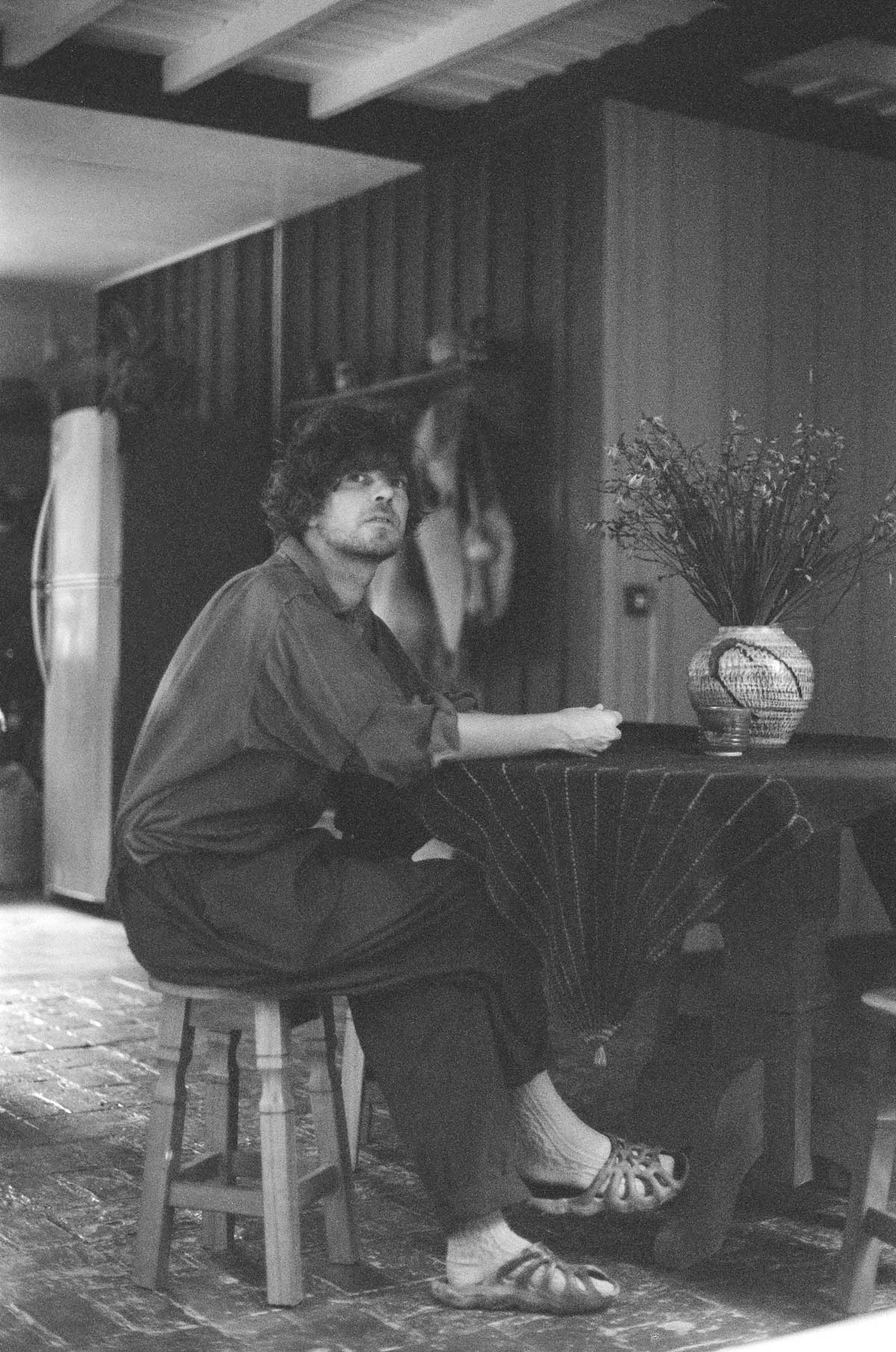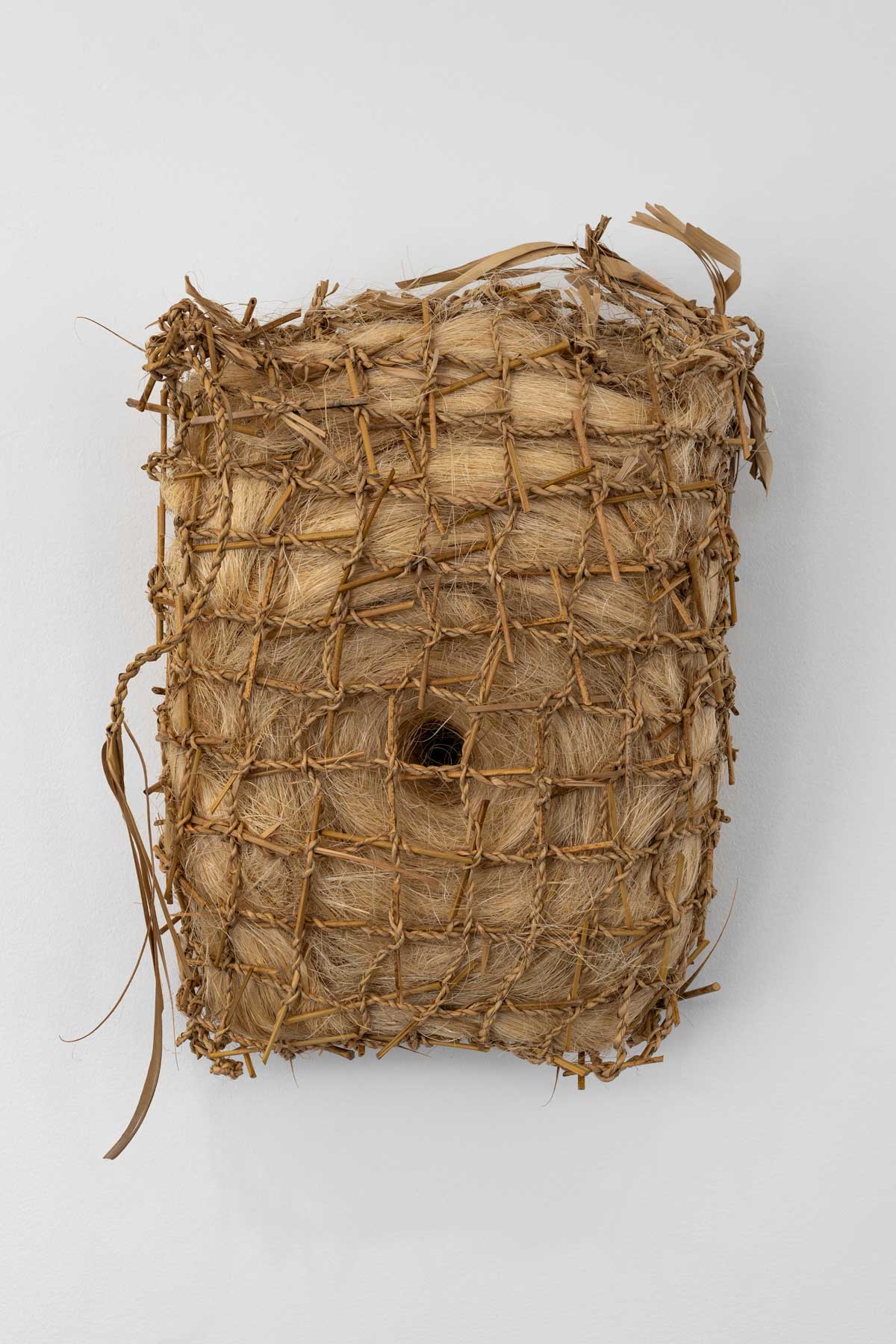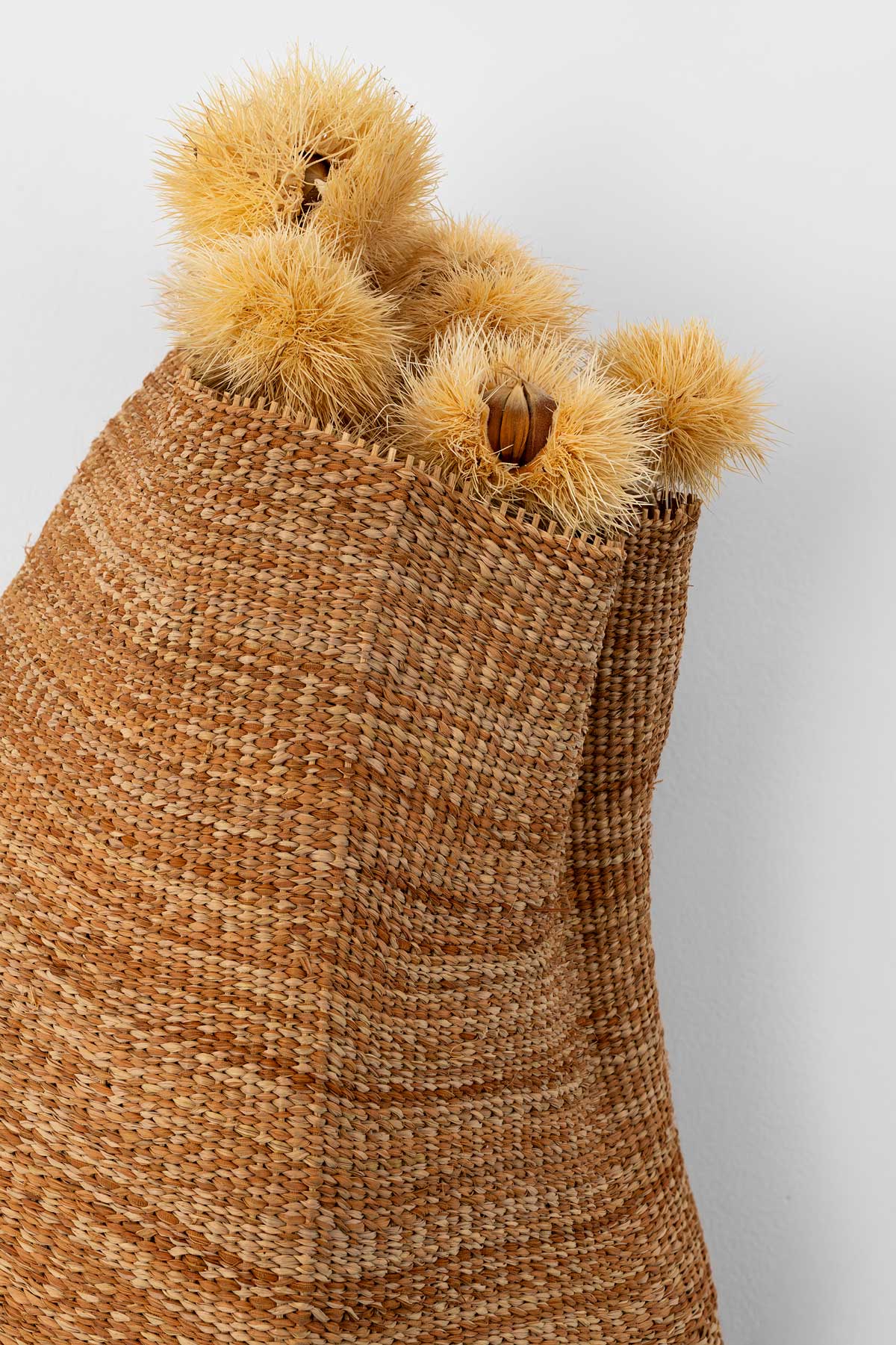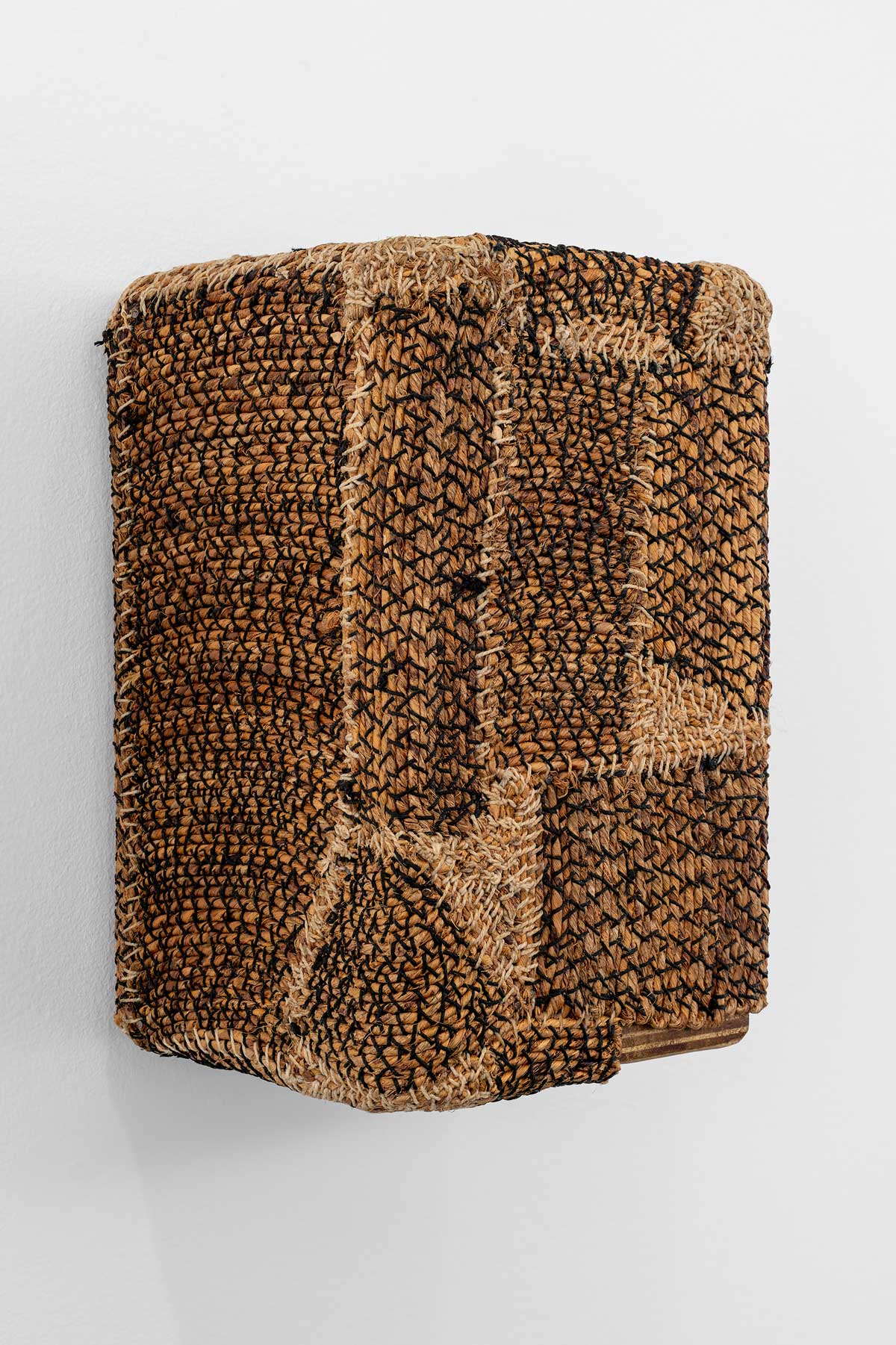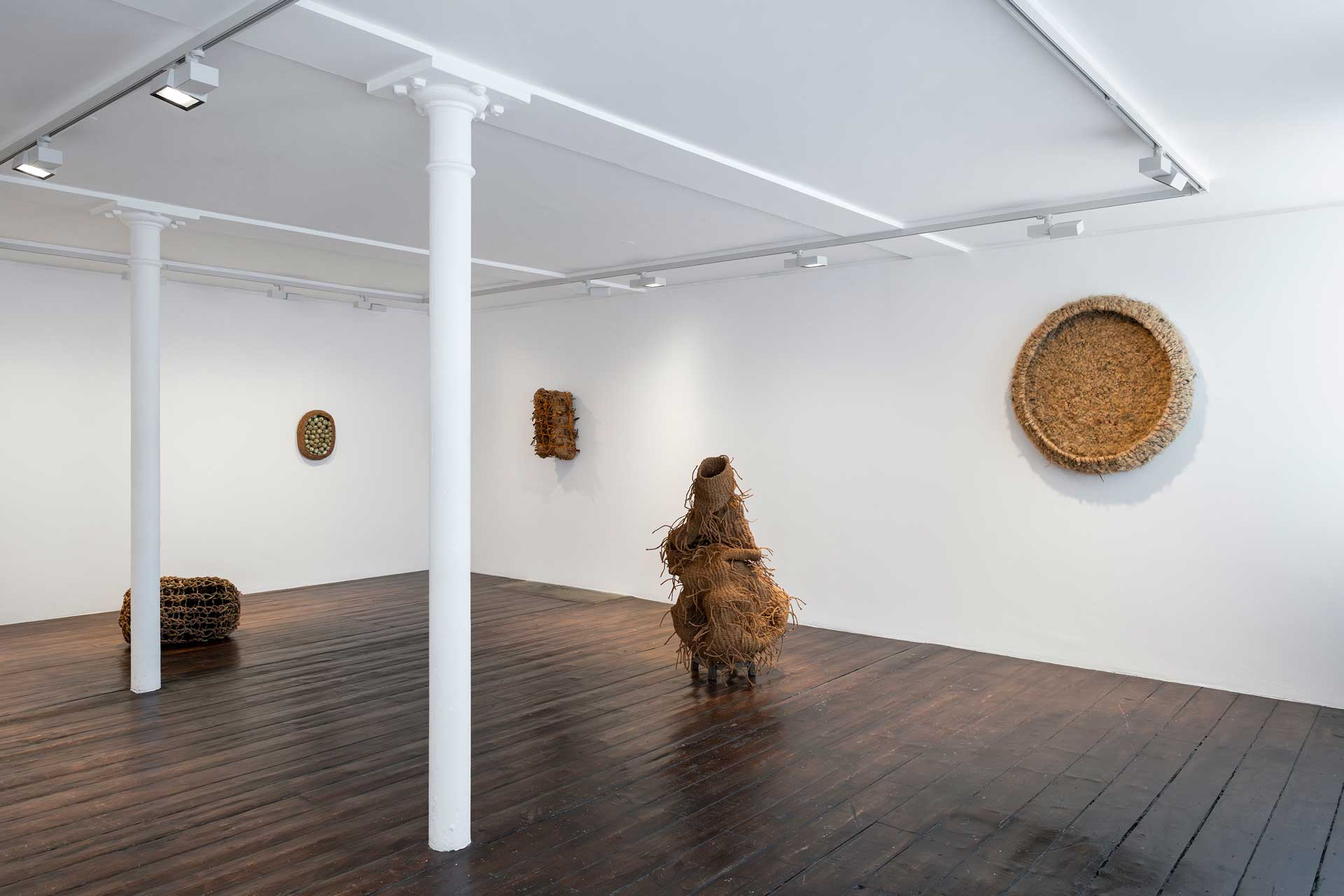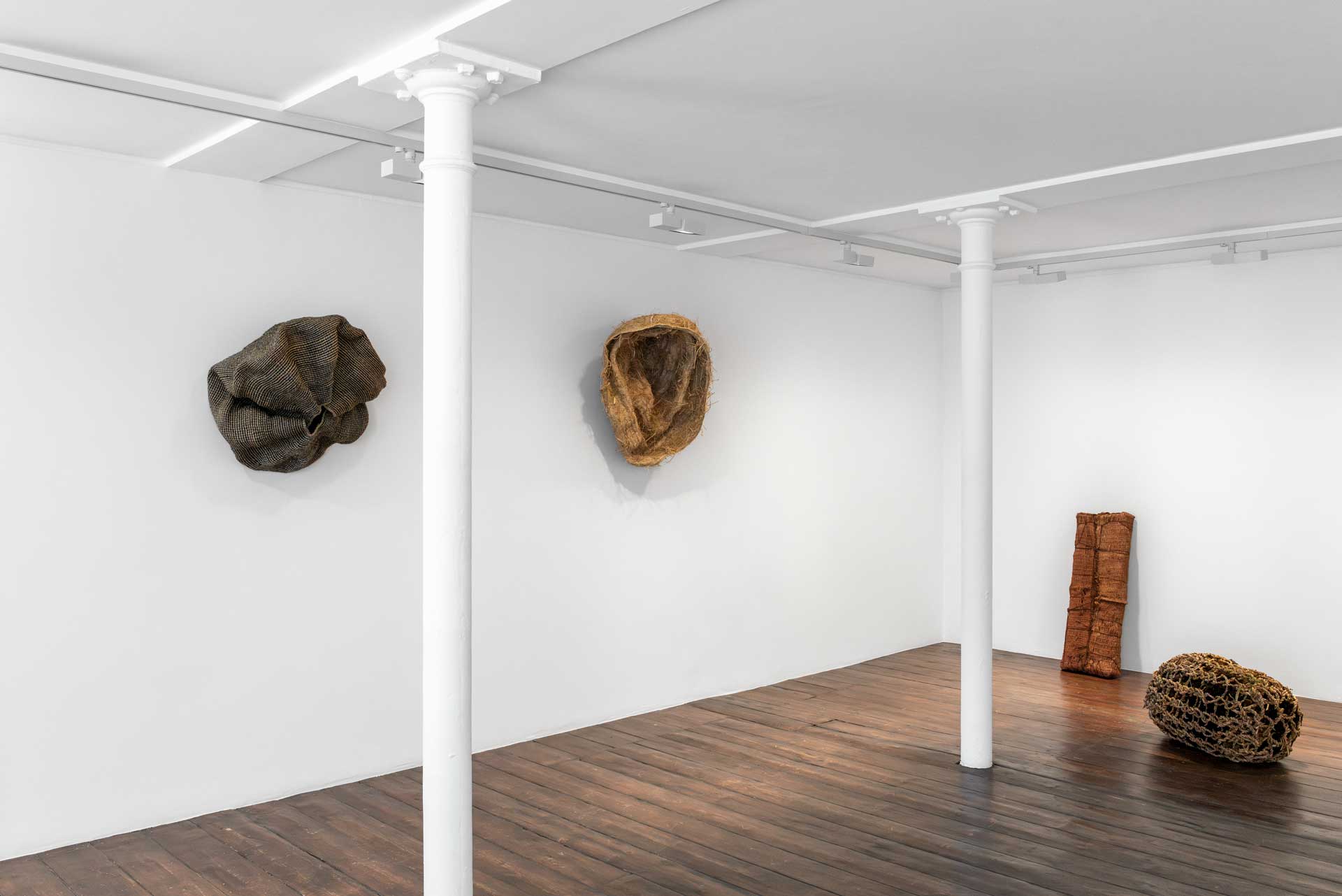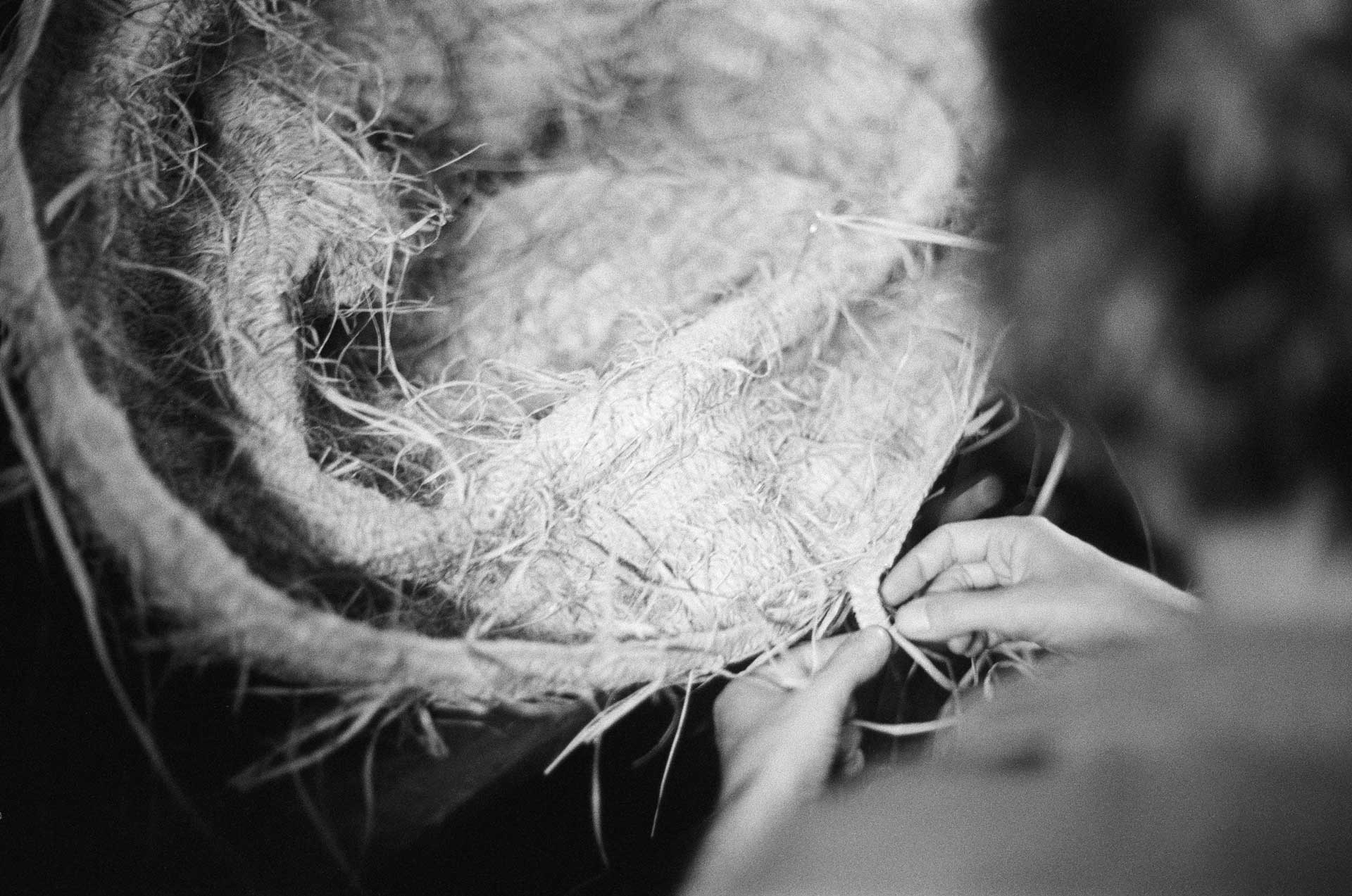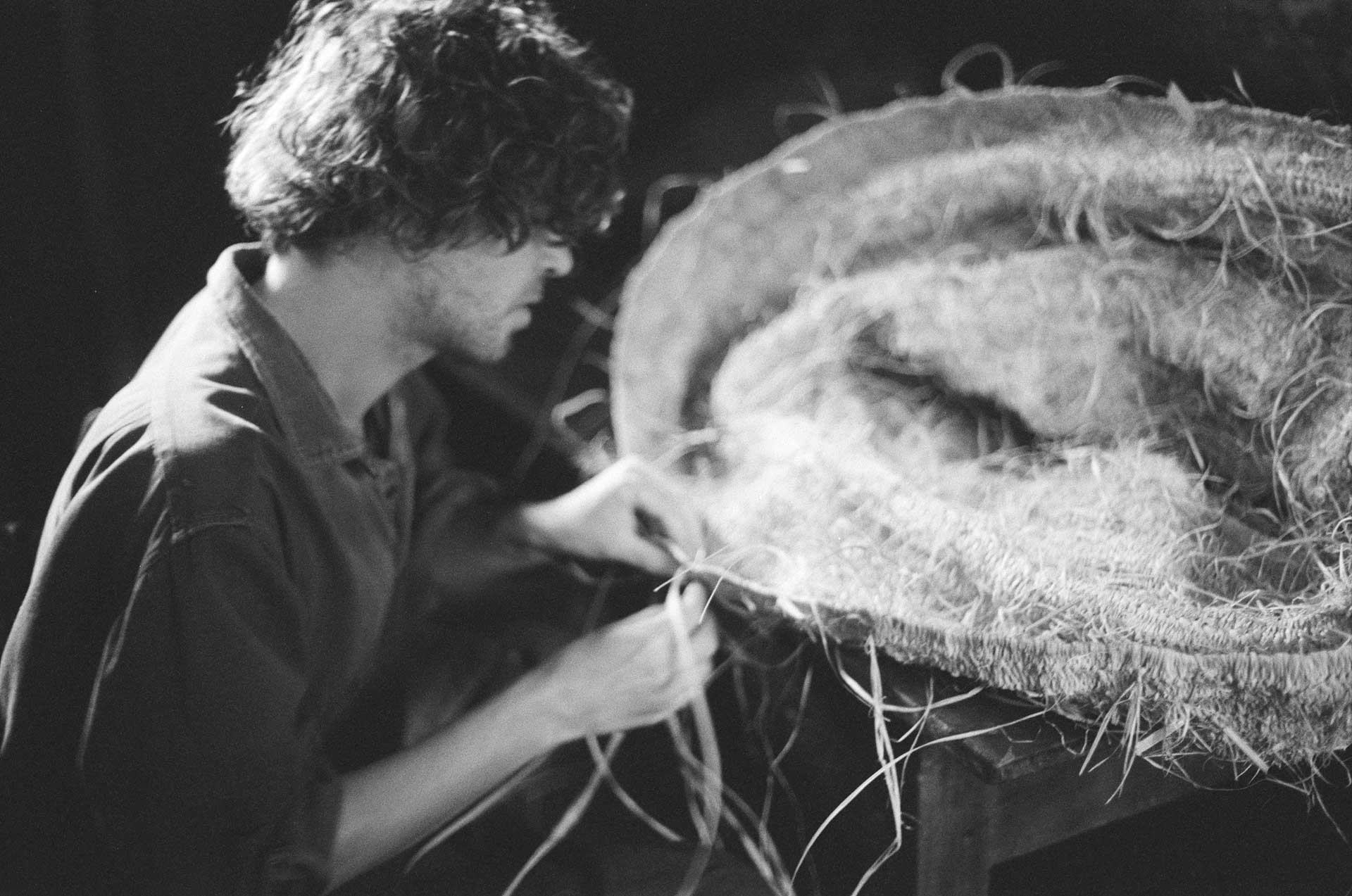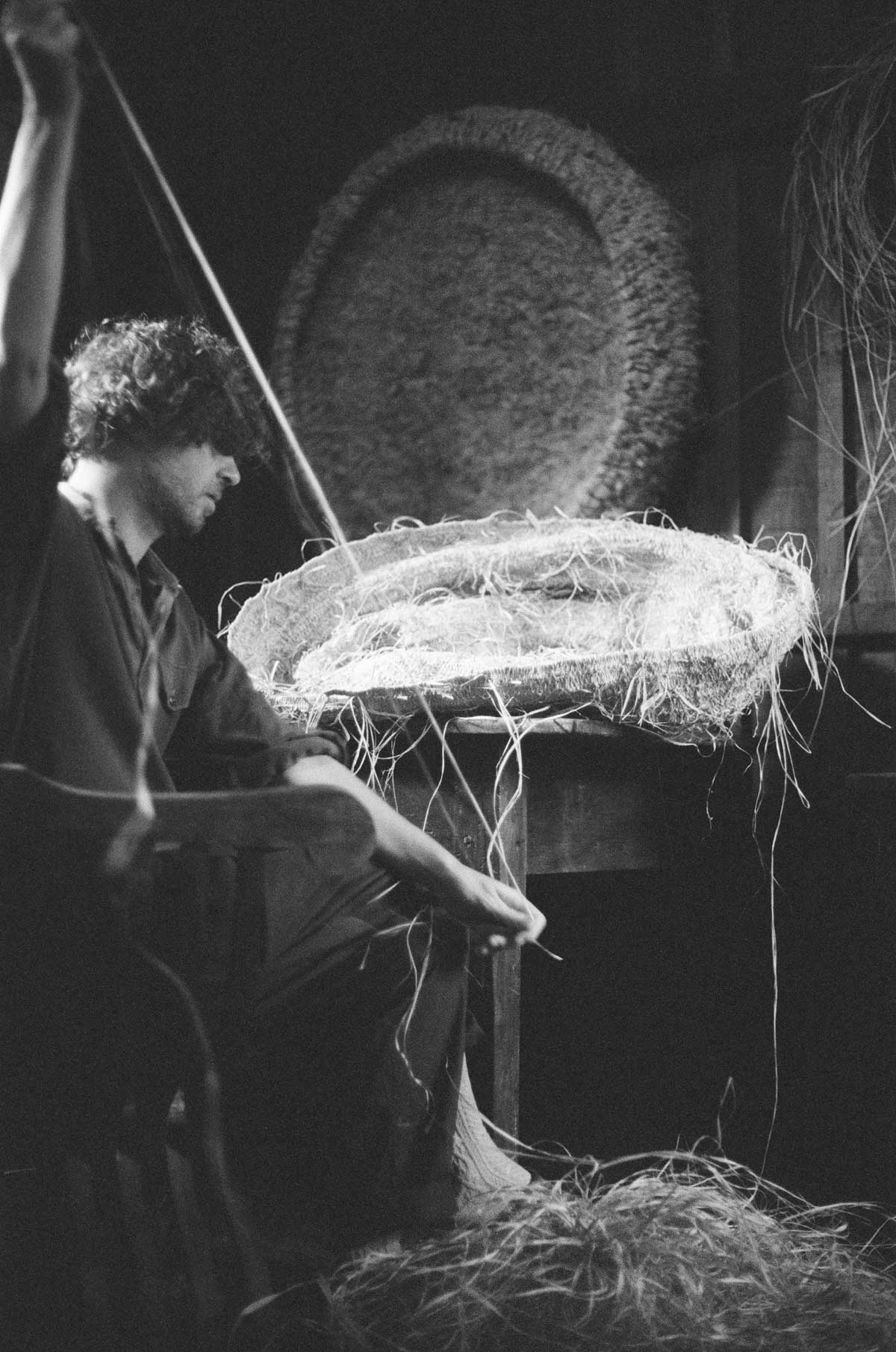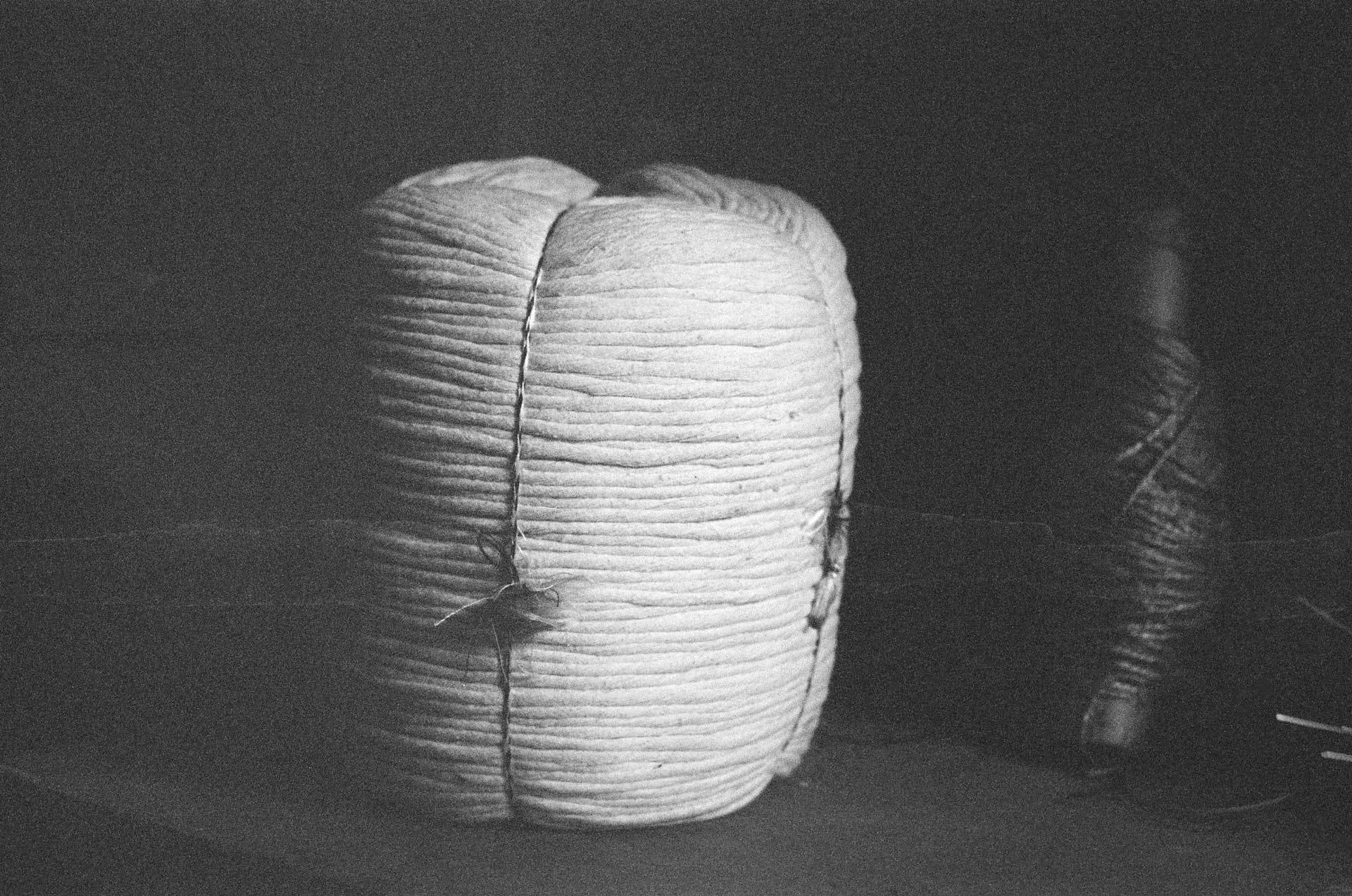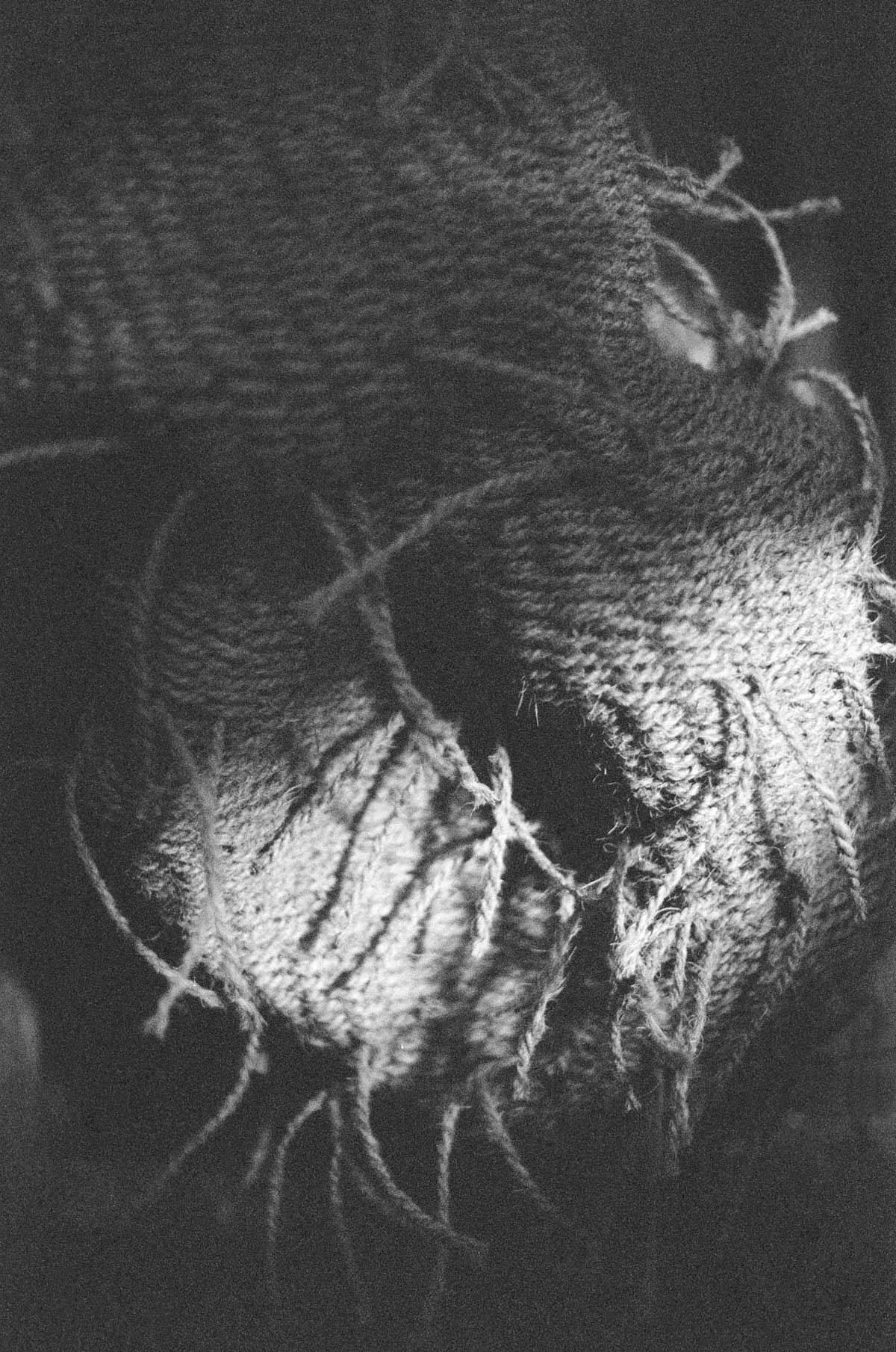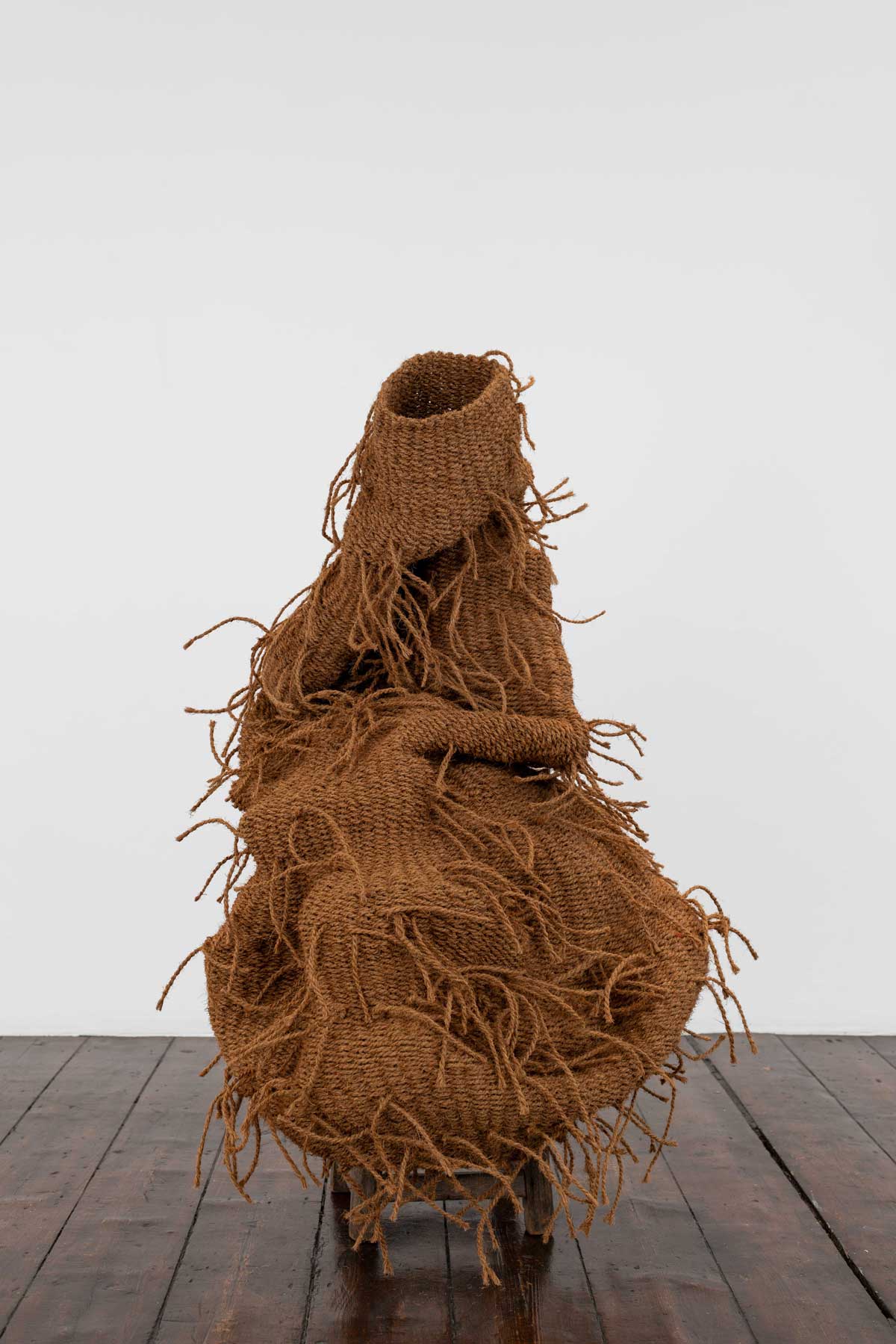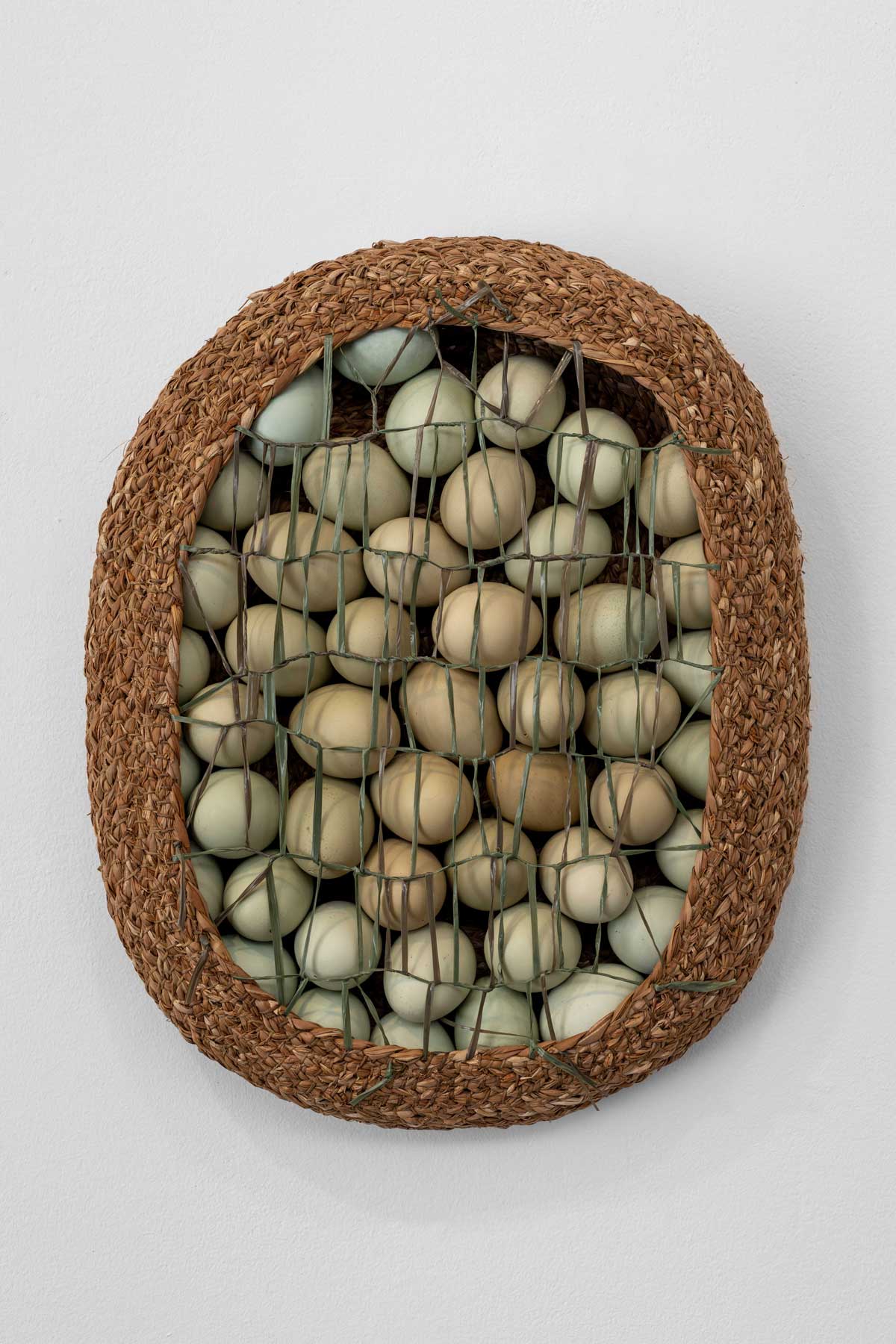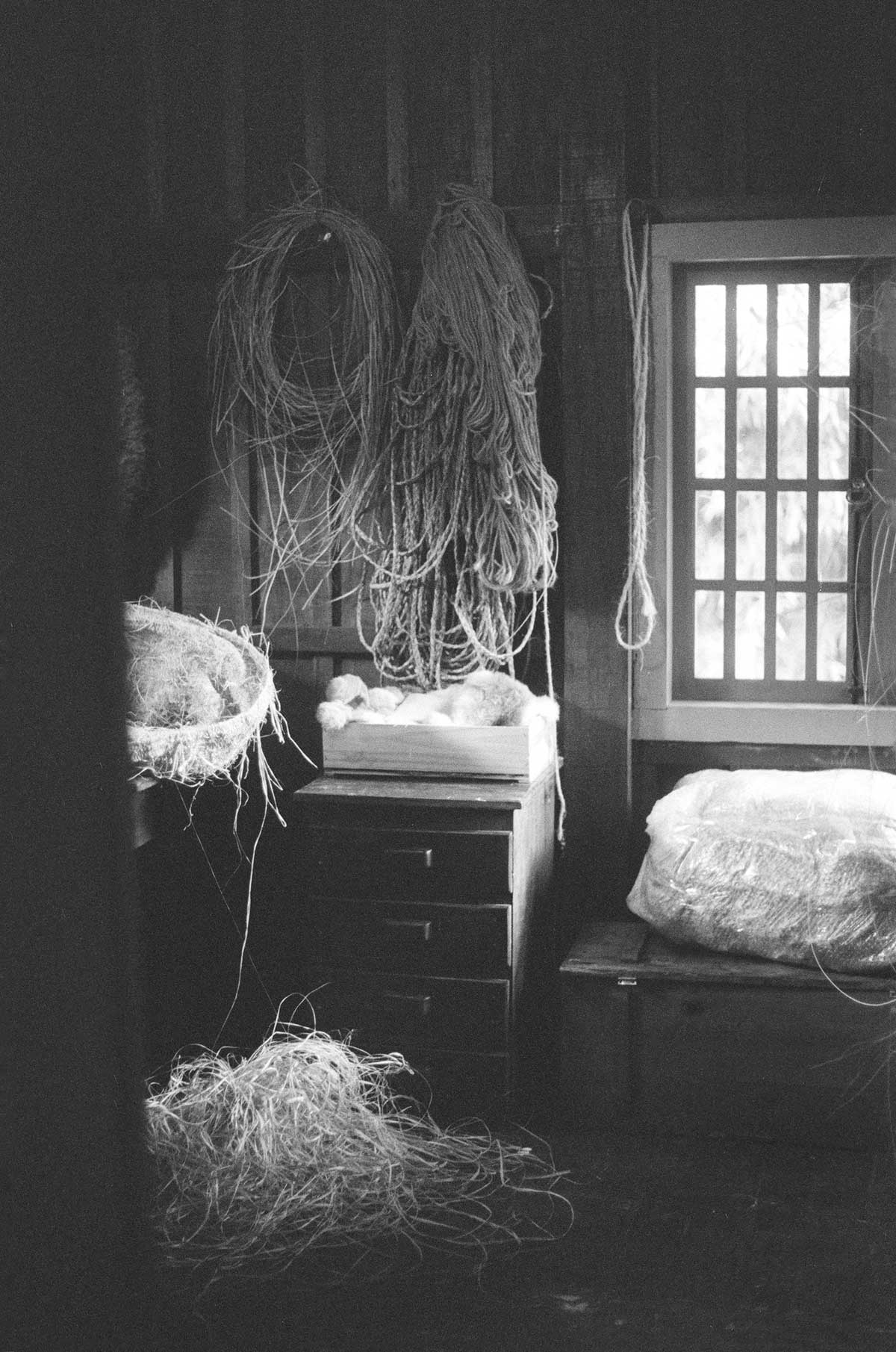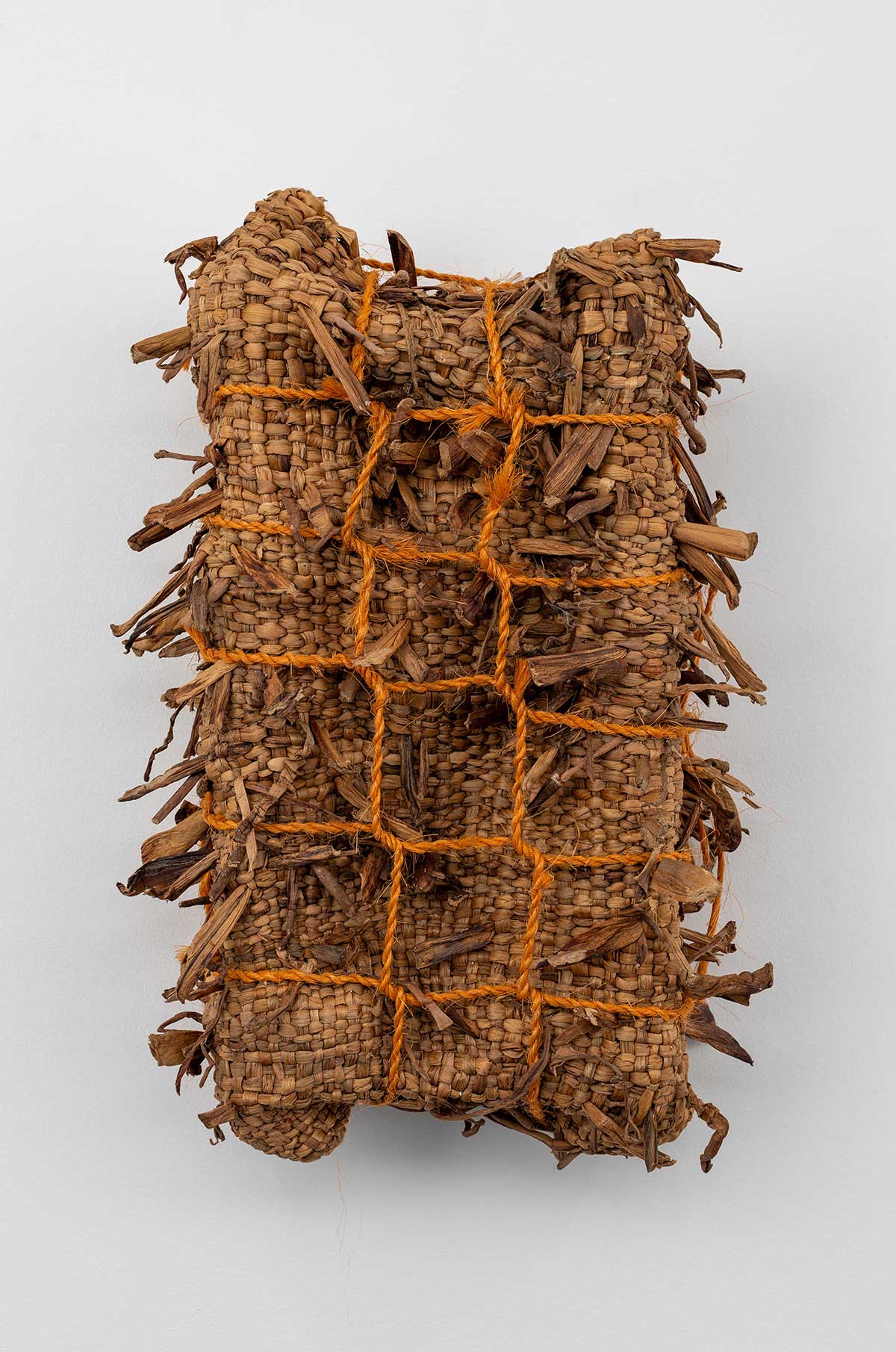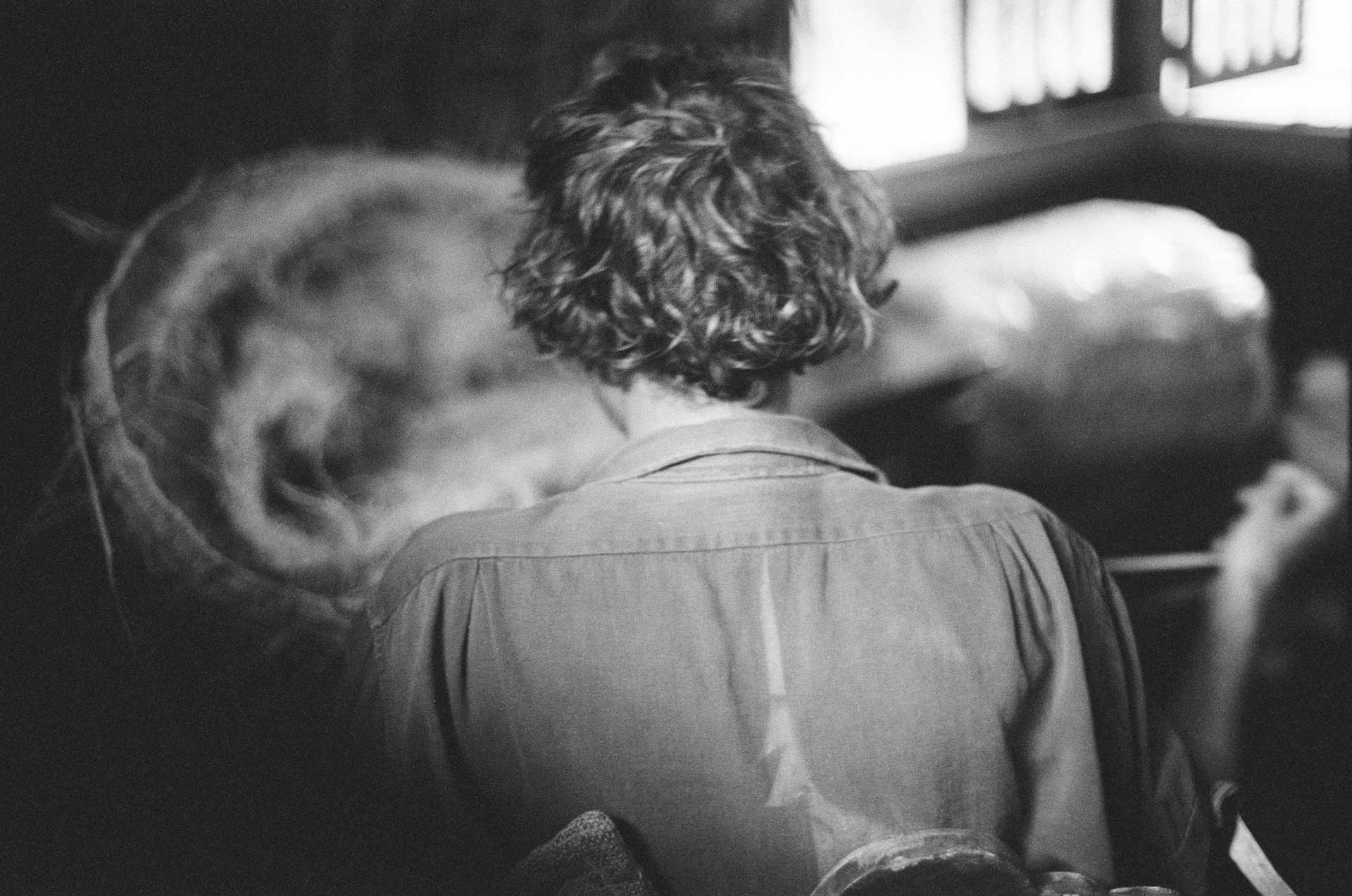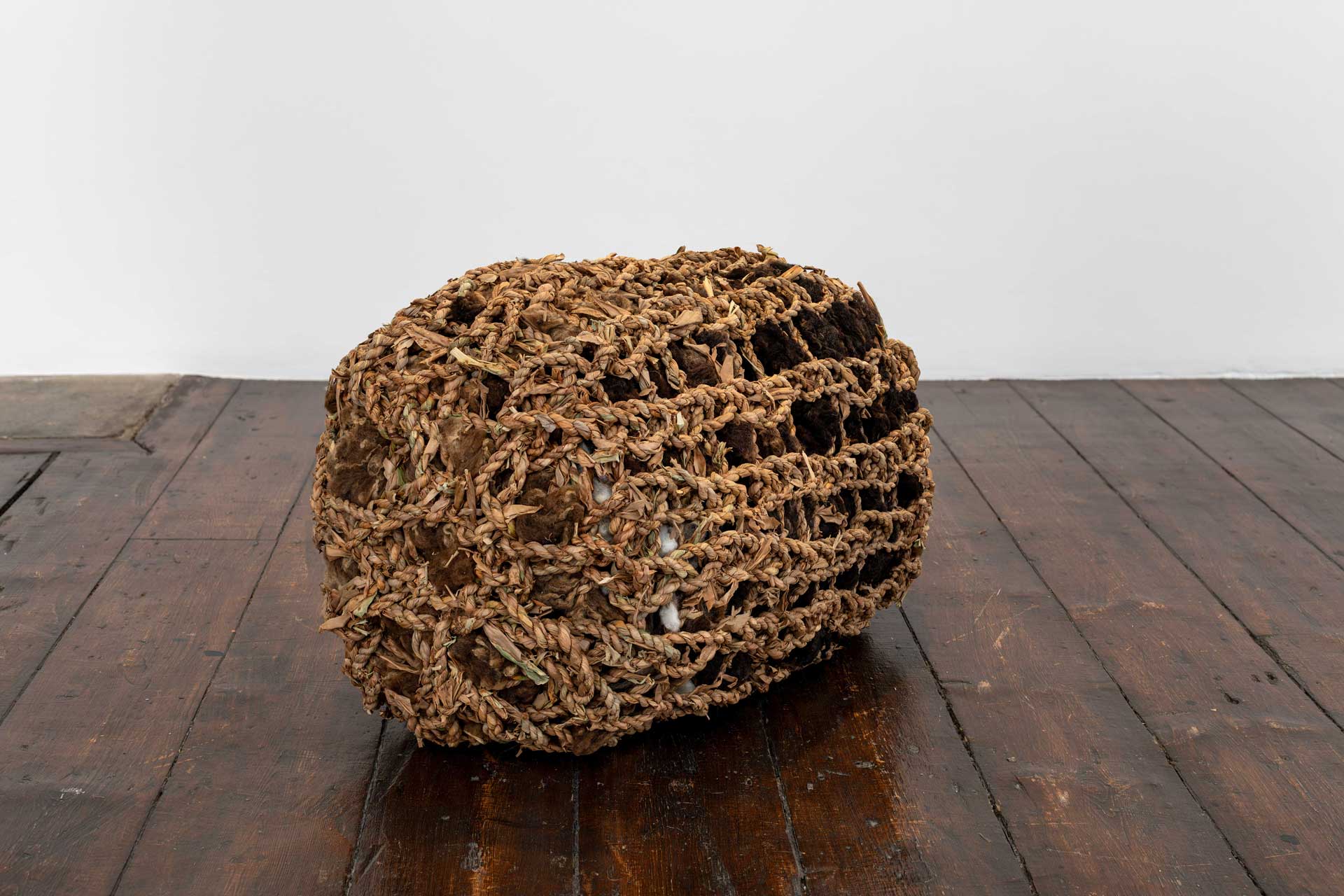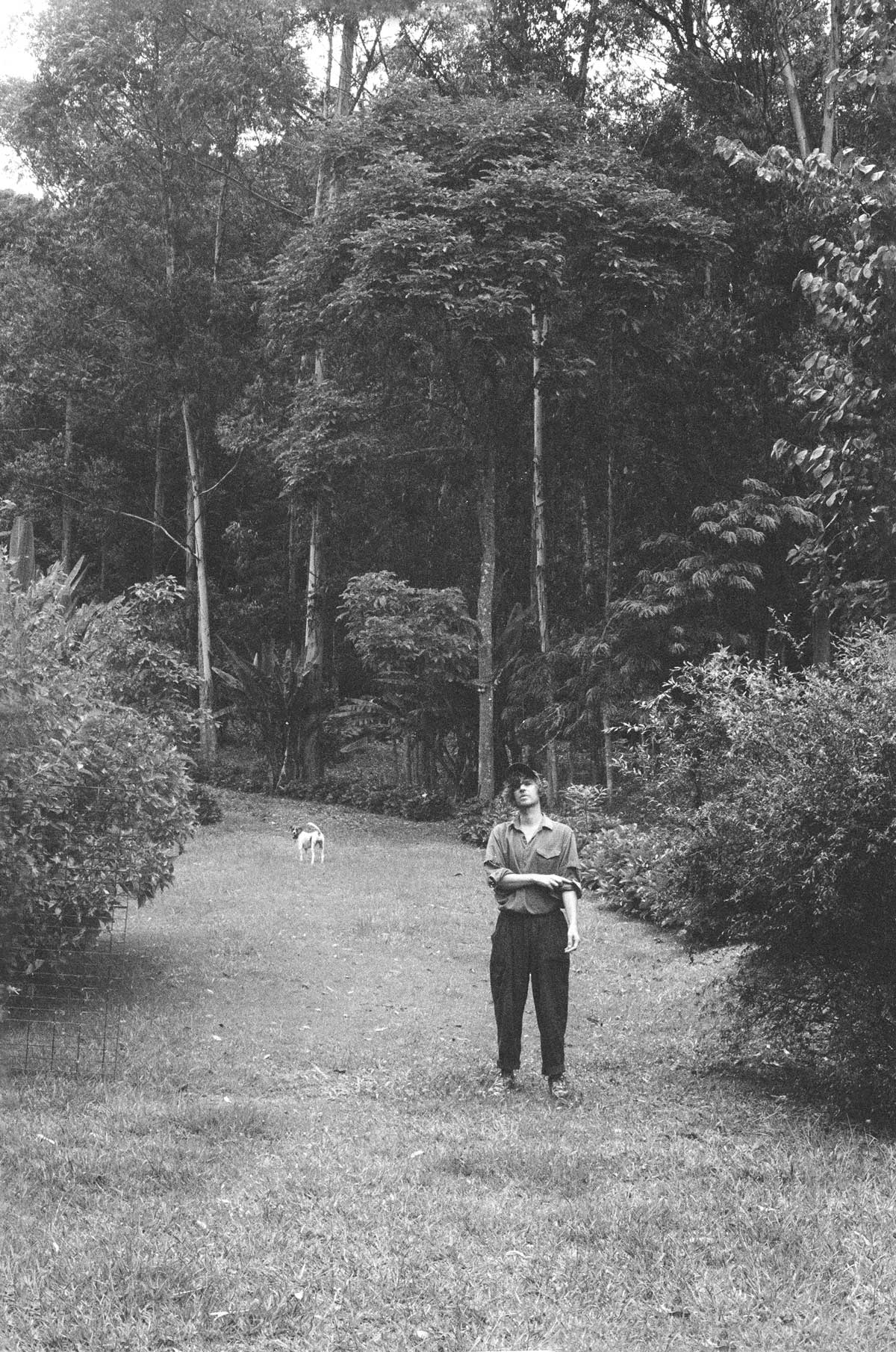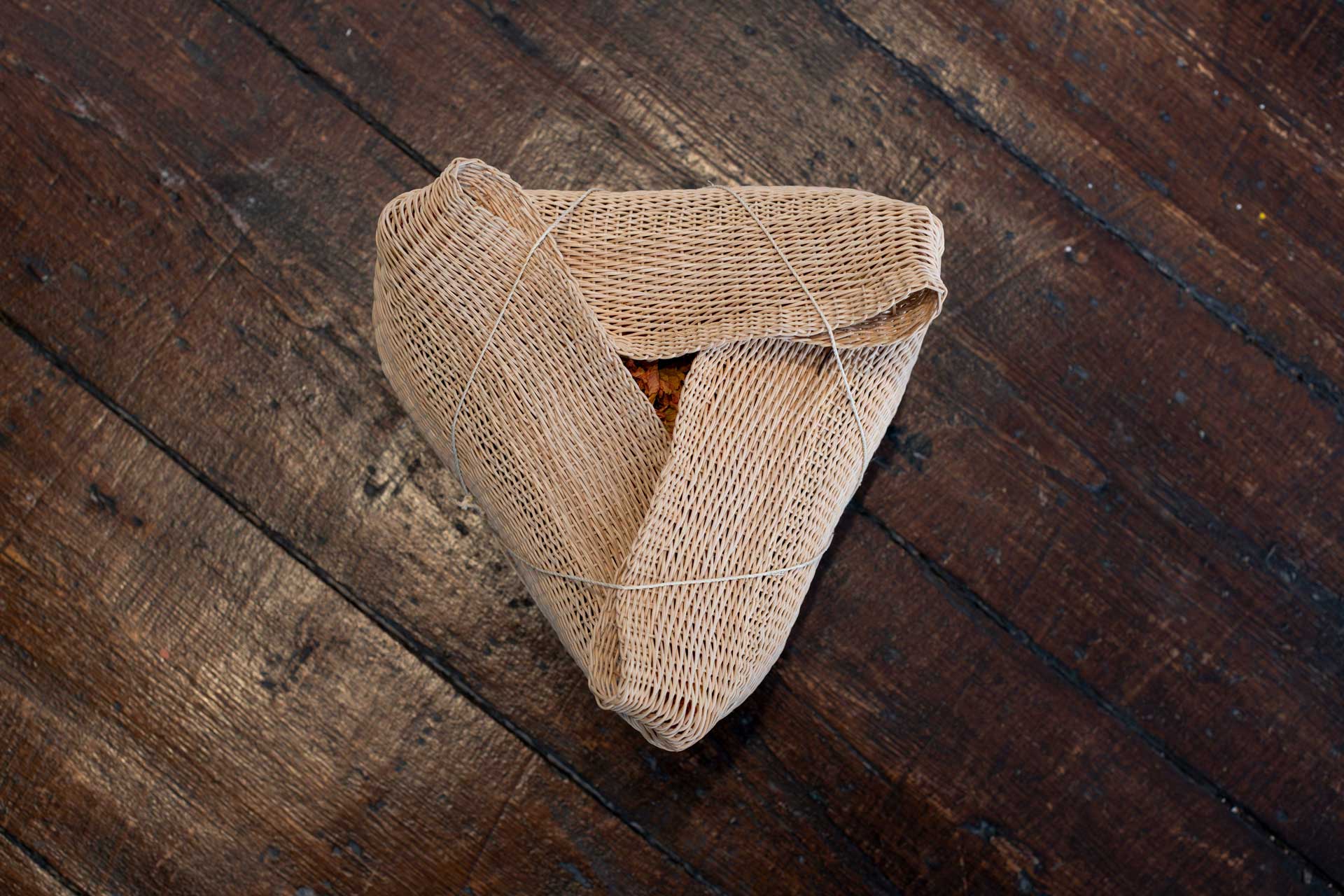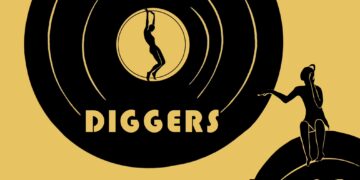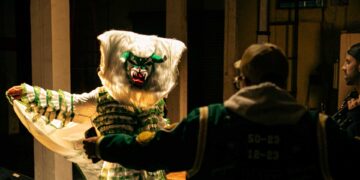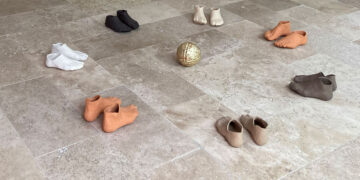In the feudal middle ages tithes to the landowner were paid by the bushel – a full basket – but a basket ‘might be adjusted through wear, bulging, tricks of weaving, moisture, the thickness of the rim, and so on’, the anthropologist James C. Scott notes, allowing for chicanery on both sides, but also pointing to the woven object as lying at the intersection between the body, labour and civic society.
My work traces how weaving lies at the heart of the modern world: the bed rock for architecture; a prototype of ceramics; a tool for the hunter-gatherer and the agricultural farmer alike; a founding object for measurement, a unit to pay taxes; an object of capitalism and commerce. The painter’s woven canvas, stretched and stitched round the wooden frame, takes its structural cues from the weaver too.
The works I’ve most recently been making, for my exhibition Satellites, at Corvi-Mora in London, are the first I have produced since living outside of the city, a shift reflected both in their material and mode of construction: the raw fibers proving harder to source further away from the networked supply chain and mass distribution economy that basketry itself helped usher in. Instead I have interlaced store-sourced fibre from my library of materials with additional thread and rope which I knotted and twined myself from the surrounding rural environment; the irony of the situation reflecting the prevailing alienation from nature within extractivist capitalism.
Each sculpture will often take a month to complete and the weave becomes an extension of my body in this period; each twist and turn in the work reflecting the back-and-forth of production. During this process the body has to create great tension in the fibers, and in return the fibers create tension in the body’s fibers, the cord like tendons that connect every muscle. It is hard work.
I never premeditate the form of a sculpture, rather each emerges organically out of an intimate and intuitive process. Anni Albers wrote about giving the object a chance to design itself, and I think of the objects I make similarly – they make themselves. Indeed I have learned that fighting against the prevailing direction of the weave rarely provides a successful result. From there, over time, the finished object is then altered further: the effects of gravity dictate how an object falls and hangs on a wall, rests on the floor or, in the case of Beer Belly (2025), sits on a stool.
4 Dozen Minus 1 (2025), is a woven vessel, with a mesh like net a front, which contains blown whole egg shells. A slightly surreal form, heightened by its verticality against the wall, it alludes to the tradition of collecting and storing eggs in baskets, while also burlesquing as a nest. The mesh is woven in a flat plastic cord, designed specifically to imitate palm that is often found bundling herbs and salad etc in vegetable markets in large cities like São Paulo, itself a substitution for the natural palm still used to tie such produce in more rural areas.. This plastic complements the green egg shells inside, themselves a modern invention, the product of highbred chickens whose coloured eggs are created through crossbreeding.
Making and exhibiting these works in a confined space I have become conscious of the smells of the fibers and how they trigger particular memories. Auricle (2025), constructed of a continuous braid of buriti has a particular smell that reminds me of the haystacks I used to play in as a child on my grandparent’s farm; those childhood memories referenced again in Potgaston (2025), a work reminiscent of a bale of hay, the orange sisal used to strap my handwoven cloth to its wooden support being traditionally used to bundle cut grass together by farmers, though more recently substituted for a synthetic equivalent.
In this London show I am pursuing multiple narratives, big and small histories that come together within the hang and often even a single work. Potgaston, for example, also takes the stretcher of a painting as a reference, one of a series of hand woven and dyed ‘canvases’ I’ve been making, each wrapping a found wooden structure; while Pierrot (autumn / winter 2025) (2024) alludes to fashion. Other sculptures, through the act of folding and wrapping, return to my ongoing invocation of the receptacle (one speculative theory narrates that basketry predates ceramics, the latter emerges through mud packed into the form) and the evolution of packaging from woven to the recent invention of cardboard. All ultimately return to the figure of the maker, the textiles weaving akin to skin, the body becoming part of the environment it inhabits.
You can find out more about Dan Coopey at @dancoopey
B&W photos: Anita Goes // Colored Photographs of the artworks and exhibition view: Melissa Castro Duarte. Courtesy of the artist.
SOLO EXHIBITIONS
Satellites, Corvi-Mora, London (2025)
The Double, Central Galeria, São Paulo (2023)
Brunches at Wonderwerk, Espaçao C.A.M.A, São Paulo (2021)
Sunday, Galeria Estação, São Paulo (2019)
Interiors, Pivô, São Paulo (2017)
Dry, Kubikgallery, Porto (2017)
lalahalaha, Belmacz, London (2015)
Laura_UpsideDown, The Institute of Jamais Vu, London (2012)
Position 1, The Agency, London (2010);
Doodad, Concrete at Hayward Gallery (2009)
SELECTED GROUP EXHIBITIONS
Coletiva, Kubik Gallery Comporta, Porto (2024)
Lorem Ipsum, Espaçao C.A.M.A São Paulo (2024)
Doispontozero, Espaçao C.A.M.A, São Paulo (2023)
Tiny Creatures, Kupfer pop up, São Paulo (2023)
The Immortal, Elizabeth Xi Bauer, London (2022)
Beuys Open Source, Belmacz, London (2021)
Tramas e Travessias Parte 1 (A Troca), massape Projetos, São Paulo (2021);
Mingei Now, curated by Nicolas Trembley, Sokyo Gallery, Kyoto (2019)
(o), curated by Caterina Duncan, Galeria Leme, São Paulo (2018)
Woven, curated by Mia Romanik, Rental Gallery, NY, (2018)
Against Forgetting, curated by Kiki Mazzucchelli, ArtBo, Bogota (2018)
Rhapsodies, Ping Pong, Brussels (2018)
In The Peaceful Dome, The Bluecoat, Liverpool (2017)
Neither, curated by Fernanda Brenner, Mendes Wood DM, Brussels (2017)
Amaranthine, Kupfer, London (2017)
The Ultimate Vessel, Koppe Astner, Glasgow (2015)
Fibra, Von Goetz, London (2015)
A Merman I Should Turn To Be, (curated), Laura Bartlett Gallery, London, UK (2014)
Survival of the Fullest, The Politics of Food, Delfina Foundation, London (2014)
Fourth Drawer Down, Nottingham Contemporary (2014)
The World is Almost 6000 Years Old, The Collection, Lincoln, as part of a citywide exhibition curated by Tom Morton (2013)
Binary, ReMap4, Athens (2013)
Slate, a collaboration with Laura Buckley and Rob Smith as part of Festivela, Gallery Vela, London (2012) and Turner Contemporary, Margate (2013)
Glaze curated by George Henry Longly, Galerie Chez Valentin, Paris, and Bischoff Weiss, London (2011/12)
Things That Have Interested Me, Waterside Contemporary, London (2012)
RESIDENCIES
Organizmo, Colombia (2022)
FAAP, São Paulo (2021)
Fibra, Colombia (2018)
Pivô, São Paulo (2016)
ACME Fire Station, London (2012–15)

